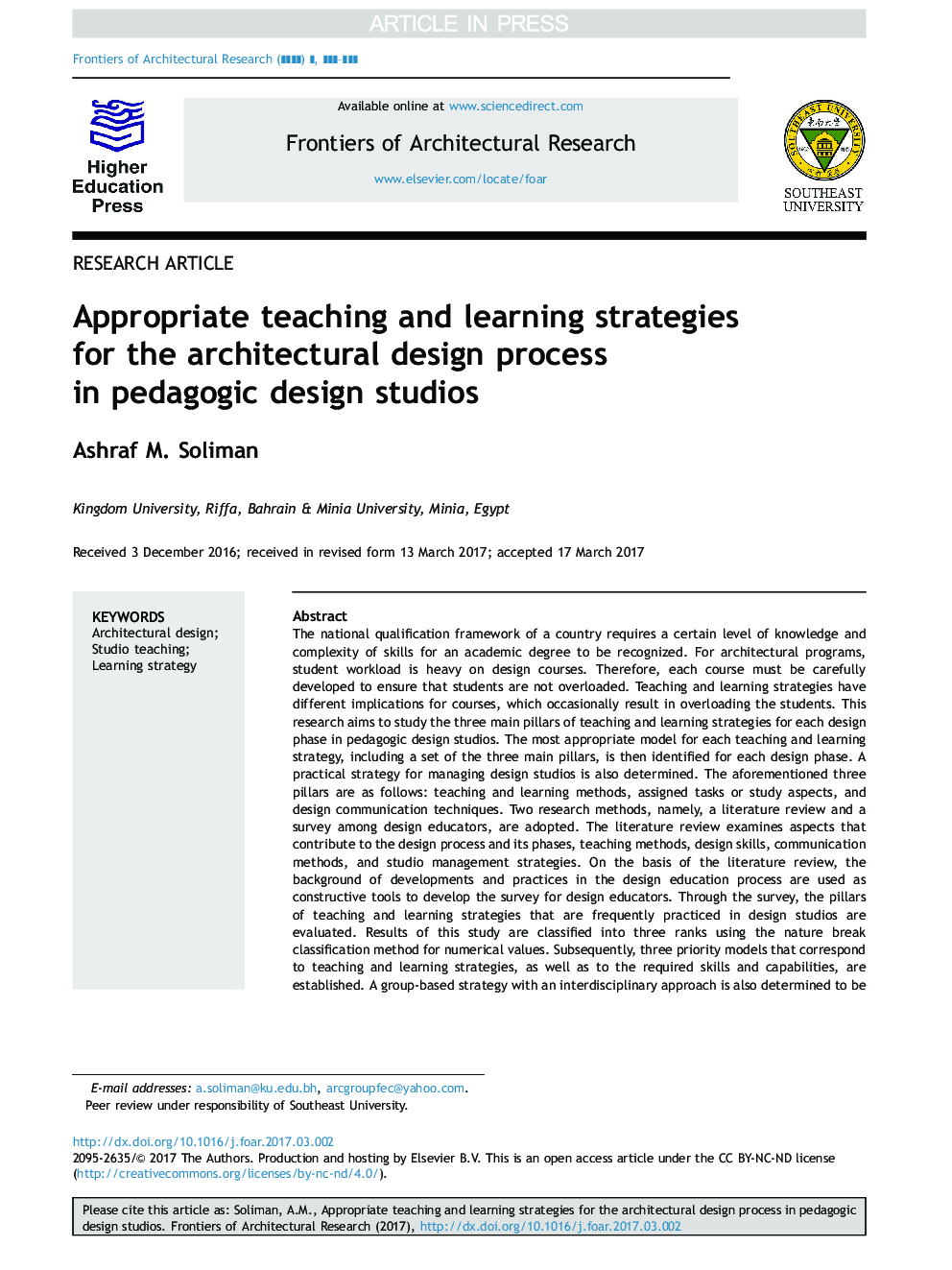| Article ID | Journal | Published Year | Pages | File Type |
|---|---|---|---|---|
| 6742527 | Frontiers of Architectural Research | 2017 | 14 Pages |
Abstract
The national qualification framework of a country requires a certain level of knowledge and complexity of skills for an academic degree to be recognized. For architectural programs, student workload is heavy on design courses. Therefore, each course must be carefully developed to ensure that students are not overloaded. Teaching and learning strategies have different implications for courses, which occasionally result in overloading the students. This research aims to study the three main pillars of teaching and learning strategies for each design phase in pedagogic design studios. The most appropriate model for each teaching and learning strategy, including a set of the three main pillars, is then identified for each design phase. A practical strategy for managing design studios is also determined. The aforementioned three pillars are as follows: teaching and learning methods, assigned tasks or study aspects, and design communication techniques. Two research methods, namely, a literature review and a survey among design educators, are adopted. The literature review examines aspects that contribute to the design process and its phases, teaching methods, design skills, communication methods, and studio management strategies. On the basis of the literature review, the background of developments and practices in the design education process are used as constructive tools to develop the survey for design educators. Through the survey, the pillars of teaching and learning strategies that are frequently practiced in design studios are evaluated. Results of this study are classified into three ranks using the nature break classification method for numerical values. Subsequently, three priority models that correspond to teaching and learning strategies, as well as to the required skills and capabilities, are established. A group-based strategy with an interdisciplinary approach is also determined to be the most suitable technique for managing the pedagogy of architectural design studios to achieve holistic designs.
Related Topics
Physical Sciences and Engineering
Energy
Renewable Energy, Sustainability and the Environment
Authors
Ashraf M. Soliman,
